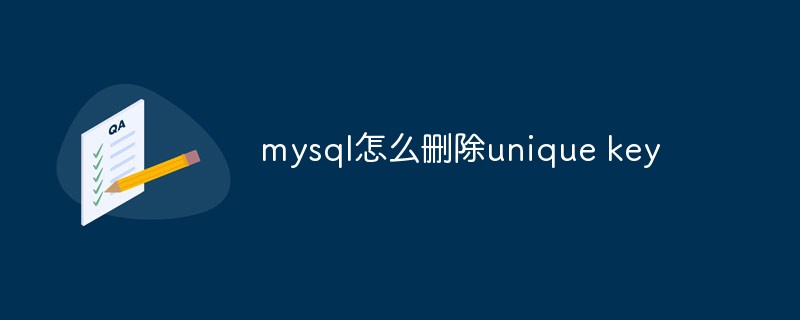
How to use MySQL and Go language to develop a simple message system
1. Introduction
The message system is one of the common functions in Internet applications. It is used on websites Or the communication between users can be realized in the application. This article will introduce how to develop a simple message system using MySQL and Go language, and provide specific code examples.
2. Preparation work
Before development, you need to prepare some tools and environment:
- Install the Go language environment and configure GOPATH;
- Install the MySQL database and create a database named "message_board";
- Install the go-sql-driver/mysql package for connecting and operating the MySQL database.
3. Database design
The data structure of the message system is relatively simple, involving only one table:
- Create a table named "message", including The following fields: id (primary key, auto-increment), name (name of the person who left the message), content (content of the message), created_at (time of the message).
4. Code implementation
-
Connecting to the database
First, we need to create a database connection function to connect to the MySQL database:import ( "database/sql" _ "github.com/go-sql-driver/mysql" ) func GetDB() (*sql.DB, error) { db, err := sql.Open("mysql", "root:password@tcp(localhost:3306)/message_board") if err != nil { return nil, err } return db, nil }Please replace "root" and "password" with your database username and password.
-
Create a message
Next, we create a function to insert a message into the database:func CreateMessage(name, content string) error { db, err := GetDB() if err != nil { return err } defer db.Close() _, err = db.Exec("INSERT INTO message (name, content, created_at) VALUES (?, ?, NOW())", name, content) if err != nil { return err } return nil }This function uses
db.Exec( )method executes the SQL statement and passes in parameters through placeholders. -
Get the message list
We also need a function to get the message list:type Message struct { ID int Name string Content string CreatedAt time.Time } func GetMessages() ([]Message, error) { db, err := GetDB() if err != nil { return nil, err } defer db.Close() rows, err := db.Query("SELECT * FROM message ORDER BY created_at DESC") if err != nil { return nil, err } defer rows.Close() var messages []Message for rows.Next() { var m Message err := rows.Scan(&m.ID, &m.Name, &m.Content, &m.CreatedAt) if err != nil { return nil, err } messages = append(messages, m) } return messages, nil }This function uses
db.Query()The method executes the SQL query and maps the query results to the structure through therows.Scan()method.
5. Usage Example
Finally, we create a sample function to demonstrate how to use the above function:
func main() {
err := CreateMessage("John", "Hello, world!")
if err != nil {
log.Fatal(err)
}
messages, err := GetMessages()
if err != nil {
log.Fatal(err)
}
for _, m := range messages {
fmt.Printf("留言ID:%d,留言者:%s,留言内容:%s,留言时间:%s
", m.ID, m.Name, m.Content, m.CreatedAt.Format("2006-01-02 15:04:05"))
}
}Run the above sample function, you can see the insertion messages and the obtained message list.
6. Summary
This article introduces how to use MySQL and Go language to develop a simple message system, and provides specific code examples. You can expand and optimize it according to your own needs, such as adding functions such as message reply and user authentication. I hope this article will be helpful to you in learning and applying MySQL and Go language development!
The above is the detailed content of How to develop a simple message system using MySQL and Go language. For more information, please follow other related articles on the PHP Chinese website!
 图文详解mysql架构原理May 17, 2022 pm 05:54 PM
图文详解mysql架构原理May 17, 2022 pm 05:54 PM本篇文章给大家带来了关于mysql的相关知识,其中主要介绍了关于架构原理的相关内容,MySQL Server架构自顶向下大致可以分网络连接层、服务层、存储引擎层和系统文件层,下面一起来看一下,希望对大家有帮助。
 mysql的msi与zip版本有什么区别May 16, 2022 pm 04:33 PM
mysql的msi与zip版本有什么区别May 16, 2022 pm 04:33 PMmysql的msi与zip版本的区别:1、zip包含的安装程序是一种主动安装,而msi包含的是被installer所用的安装文件以提交请求的方式安装;2、zip是一种数据压缩和文档存储的文件格式,msi是微软格式的安装包。
 mysql怎么去掉第一个字符May 19, 2022 am 10:21 AM
mysql怎么去掉第一个字符May 19, 2022 am 10:21 AM方法:1、利用right函数,语法为“update 表名 set 指定字段 = right(指定字段, length(指定字段)-1)...”;2、利用substring函数,语法为“select substring(指定字段,2)..”。
 mysql怎么替换换行符Apr 18, 2022 pm 03:14 PM
mysql怎么替换换行符Apr 18, 2022 pm 03:14 PM在mysql中,可以利用char()和REPLACE()函数来替换换行符;REPLACE()函数可以用新字符串替换列中的换行符,而换行符可使用“char(13)”来表示,语法为“replace(字段名,char(13),'新字符串') ”。
 mysql怎么将varchar转换为int类型May 12, 2022 pm 04:51 PM
mysql怎么将varchar转换为int类型May 12, 2022 pm 04:51 PM转换方法:1、利用cast函数,语法“select * from 表名 order by cast(字段名 as SIGNED)”;2、利用“select * from 表名 order by CONVERT(字段名,SIGNED)”语句。
 MySQL复制技术之异步复制和半同步复制Apr 25, 2022 pm 07:21 PM
MySQL复制技术之异步复制和半同步复制Apr 25, 2022 pm 07:21 PM本篇文章给大家带来了关于mysql的相关知识,其中主要介绍了关于MySQL复制技术的相关问题,包括了异步复制、半同步复制等等内容,下面一起来看一下,希望对大家有帮助。
 mysql怎么判断是否是数字类型May 16, 2022 am 10:09 AM
mysql怎么判断是否是数字类型May 16, 2022 am 10:09 AM在mysql中,可以利用REGEXP运算符判断数据是否是数字类型,语法为“String REGEXP '[^0-9.]'”;该运算符是正则表达式的缩写,若数据字符中含有数字时,返回的结果是true,反之返回的结果是false。
 mysql怎么删除unique keyMay 12, 2022 pm 03:01 PM
mysql怎么删除unique keyMay 12, 2022 pm 03:01 PM在mysql中,可利用“ALTER TABLE 表名 DROP INDEX unique key名”语句来删除unique key;ALTER TABLE语句用于对数据进行添加、删除或修改操作,DROP INDEX语句用于表示删除约束操作。


Hot AI Tools

Undresser.AI Undress
AI-powered app for creating realistic nude photos

AI Clothes Remover
Online AI tool for removing clothes from photos.

Undress AI Tool
Undress images for free

Clothoff.io
AI clothes remover

AI Hentai Generator
Generate AI Hentai for free.

Hot Article

Hot Tools

Zend Studio 13.0.1
Powerful PHP integrated development environment

MantisBT
Mantis is an easy-to-deploy web-based defect tracking tool designed to aid in product defect tracking. It requires PHP, MySQL and a web server. Check out our demo and hosting services.

Dreamweaver CS6
Visual web development tools

Safe Exam Browser
Safe Exam Browser is a secure browser environment for taking online exams securely. This software turns any computer into a secure workstation. It controls access to any utility and prevents students from using unauthorized resources.

PhpStorm Mac version
The latest (2018.2.1) professional PHP integrated development tool





